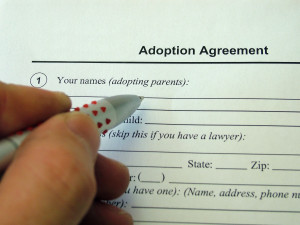 Throughout history, fathers have frequently been cast aside as an overlooked parent when it comes to family matters. That traditionally has held true in the adoption process.
Throughout history, fathers have frequently been cast aside as an overlooked parent when it comes to family matters. That traditionally has held true in the adoption process.
Consider the concept of the adoption triad. This is the concept of a triangle that exists during adoptions with the adoptee in one corner, the adoptive parents in another and the biological mother in the third corner. Left out of this triumvirate is the birth father, whose parental rights in this process have often been an afterthought.
Until recently, that is. The Chicago Tribune recently covered how birth dads are fighting for a bigger role in the adoption process. Fathers are gradually gaining more rights, however, there are still many factors working against biological dads who want to stay involved.
Here are some important things to know about fathers’ rights when it comes to the adoption process.
Termination of parental rights
The first step in the adoption process is the termination of the parental rights of the child’s birth parents. This termination process can be either voluntary or involuntary depending on the situation.
Grounds for voluntary termination depends on the state, though the parent must typically present a case to the court that it’s in the child’s best interests. An example for voluntary termination is a teenage mother who is unprepared to properly care for the child.
Grounds for involuntary TPR are up to each state to decide, but often include:
- Severe chronic abuse or neglect
- Sexual abuse
- Abuse or neglect of other children in the household
- Abandonment
- Long-term mental illness
- Long-term drug or alcohol problems
- Failure to support or maintain contact with the child
Some states allow appeal if the consent is terminated involuntarily.
Three types of adoptions
Generally, there are three types of adoptions:
- Confidential adoption: the birth and adoptive parents never know each other and the adopted children never know their birth parents.
- Adoption with some openness: some degree of contact between the birth parents and adopted children. This could include the exchange of letters and pictures.
- Open adoption: the adopted child is given the opportunity to develop a relationship with his/her birth parents.
The Independent Adoption Center is a strong advocate for open adoptions, arguing this arrangement is the healthiest for all parties involved. Fortunately, 95 percent of adoptions are now open, according to the 2012 “Openness in Adoption” report from the Donaldson Adoption Institute.
Post Adoption Contact Agreements
Although the adoption process terminates the parental rights of birth parents, that doesn’t mean all contact has to be lost with the child.
Post Adoption Contact Agreements, which are signed at the time the adoption relinquishment or consent is signed, allows for certain, specified contact between the birth parents and the adoptive family.
Approximately half the states have passed laws recognizing Post Adoption Contract Agreements making them enforceable.
The burden is on the father to prove paternity
While birth dads are gaining more rights in the adoption process, the onus is still on fathers to prove paternity. Otherwise, it’s entirely possible for a birth mother to give the child up for adoption with the father having absolutely no say in the decision, as nearly happened in the case of Christopher Emanuel.
The problem is it’s extraordinarily easy for mothers to lie about who the biological father is and commit paternity fraud. If a man doesn’t realize he has fathered a child, he is susceptible to losing the child to the adoption system without even realizing.
Putative father registries
Thirty-three states currently have putative father registries, which, in theory, enable a man to declare himself as the father before the baby is born.
These registries are designed to ensure birth parents the chance of staying involved in their child’s life, but in reality they often do the opposite. There is no national registry, so dads must register in every state where the mother could give birth.
They also often have extremely tight deadlines that range from 5 to 30 days after birth or any time before an adoption is filed.
And very few people even know about the registries, so the registration rate across the country is extremely low.
Advice for birth dads
Perhaps the best thing birth fathers can do to stay involved in the process is to stay on good terms with the birth mom.
“Avoid conflict (put three exclamation points here) with the birth mom,” advised Cordell & Cordell Principal Partner Joe Cordell. “She can make this difficult for you by saying you’re not the father. When there’s a conflict, the birth mom wins.”
If you run into any problems, it is crucial for you to immediately consult with a family law attorney to make sure your parental rights are protected.

